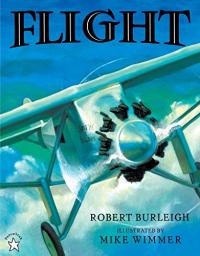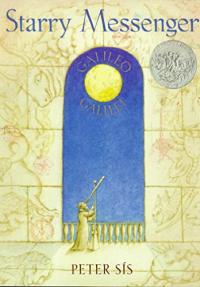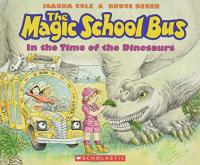
Animals can seem unusual to the uninitiated. Why do lions have manes? (No, it’s not to show off or because they eat barbers.) Why do walruses have moustaches? These “whys” and more are addressed by silly answers as well as brief facts in this attractive book of large, comic illustrations and varied typefaces.
Why?

When is “pink for crow…”? When it has “just hatched from its egg.” Vibrant, uncluttered paintings accompany the straightforward text to explore different ways of looking at things and prove that blueberries can be white!
White Is for Blueberry

Though few have ever considered dust – what it is or where it came from – this informative, evocative book may change that. Consider, for example, that the film on a computer screen may have been the dust on a dinosaur. Poetic language and suggestive illustrations pique interest through their simplicity.
Stars Beneath Your Bed: The Surprising Story of Dust

Literalist housekeeper Amelia Bedelia is back to help a teacher with the science fair. Snappy dialogue, slapstick humor, and recognizable situations are easy to read and sure to engage.
Amelia Bedelia, Rocket Scientist?

A biologist introduces spiders and their webs through stunning full color close-up photographs and a lively text. Spider facts include the arachnids’ common and scientific names, size, where they live, and what they eat. A technique to find webs and additional sources of information conclude this handsome volume.
Spiders and Their Webs

Two children play hide and seek outdoors on a warm night. Little do they know that a culex, a newly matured mosquito, is also looking for them. Bordered, color photographs taken with an electron microscope are inserted on black and white photographs of the playing children. Additional information about mosquitoes, micrographs, and more is appended in this fascinating and informative book.
Mosquito Bite

The garden that Eddie and his Mum plant while his younger sister “helps” grows in the warm earth with the help of sun, rain, and beneficial creatures like worms. Eddie learns that other creatures (like slugs) eat plants. This gentle, engaging family story informs and illuminates many aspects of gardening.
Eddie’s Garden and How to Make Things Grow

Archaeologists on a dig work very much like detectives at a crime scene. Every chipped rock, charred seed, or fossilized bone could be a clue to how people lived in the past. In this information-packed Let’s-Read-and-Find-Out Science book, Kate Duke explains what scientists are looking for, how they find it, and what their finds reveal.
Archaeologists Dig for Clues

3…2…1…lift off! Take a journey into space exploration. With fun facts like what astronauts eat and how they sleep, kids will learn about today’s space adventures and how people from all over the world work to continue space exploration.
Astronauts Today

A brightly colored and intricately detailed space shuttle prepares for liftoff, then shoots into space, leaving Earth’s atmosphere and going into orbit.
Big Silver Space Shuttle

For Ms. Splinter, the second grade field trip to the circus provides a chance for serious learning. Not so for inquisitive, bold Emeline who explores the circus in unforgettable ways to the delight of the other students and to her teacher’s horror. Humor abounds, and watercolor and line illustrations complement the understated, surprisingly informative text.
Emeline at the Circus

Charles Lindbergh was only 25 years old when he made his historic non-stop flight across the Atlantic Ocean. Through Burleigh’s vivid retelling and Wimmer’s bold paintings, the reader soars with Lindbergh as he follows his dream.
Flight: The Journey of Charles Lindbergh

Have you ever dreamed of being an astronaut? Wondered what it might be like to see the sun set sixteen times in one day? Open this book and be transported on an information-packed voyage aboard the space shuttle.
Floating in Space

In 1802, when Champollion was eleven years old, he vowed to be the first person to read Egypt’s ancient hieroglyphs. He faced great challenges over the next twenty years as he searched for the elusive key to the mysterious writing.
Seeker of Knowledge: The Man Who Deciphered Egyptian Hieroglyphs

Much has been written about the vast scientific importance of space exploration, but very little about the human side of being a member of an astronaut crew. In this book, with the help of journalist Susan Okie, Sally Ride shares the personal experience of traveling into space. America’s first woman astronaut answers questions most frequently asked about a journey through space.
To Space and Back

Join the crew and find out how rockets, probes, telescopes, and space shuttles work! Illustrations and text introduces young readers to the amazing variety of spaceships past, present, and ready to blast off into the future.
The Best Book of Spaceships

Ms. Frizzle, an unflappable science teacher, drives the magical school bus into a cloud where the children shrink to the size of water droplets and follow the course of water through the city’s waterworks system.
The Magic School Bus at the Waterworks

Young stargazers learn about different star colors and brightness, how to locate major constellations, and how to make mini-planetariums by using coffee cans and flashlights.
The Sky Is Full of Stars

The large format of this book is perfect for the theatrical, sometimes spectacular, full color illustrations of the larger-than-life dinosaurs of yesteryear. The brief but informative text adds to the drama.
Dinosaurs: The Biggest, Baddest, Strangest, Fastest

Ever wonder why popcorn pops? When did it become a favorite food? With humor and verve in text and illustration, dePaola presents scientific and historical information about popcorn in this delectable book.
Popcorn Book

Crisp illustrations fold out to illustrate the way Sam’s garden grows. Simply told in a familiar cadence, this cumulative tale may inspire young children to grow a garden while exploring their environment.
A Seed Grows: My First Look at a Plant’s Life Cycle

The complicated, sometimes disconcerting life of Galileo is presented in a multi-faceted, intricately illustrated, completely original biography. Differing typefaces combine with illustrations in various styles to create an informative, engaging, and unusual glimpse of the man and his genius.
Starry Messenger: Galileo Galilei

Short poems and child-like illustrations framed on brilliantly white pages capture the splendor (“Morning glories/Campfire stories‡”) and sorrow of summer *(“Skinned knees/Ninety degrees‡). Readers will readily relate to all aspects of summer, seen in a short poem for the end of summer: “Three words/Most cruel:/Back to school.”
Summersaults

Everyone’s favorite science teacher is back as Ms. Frizzle takes her class on a journey into the Mesozoic Era. The Magic School Bus becomes a time machine, giving the students a first-hand look at many dinosaurs and the eras in which they lived. The text and illustrations are blended in this amazing fact and trivia-filled field trip to the past.
